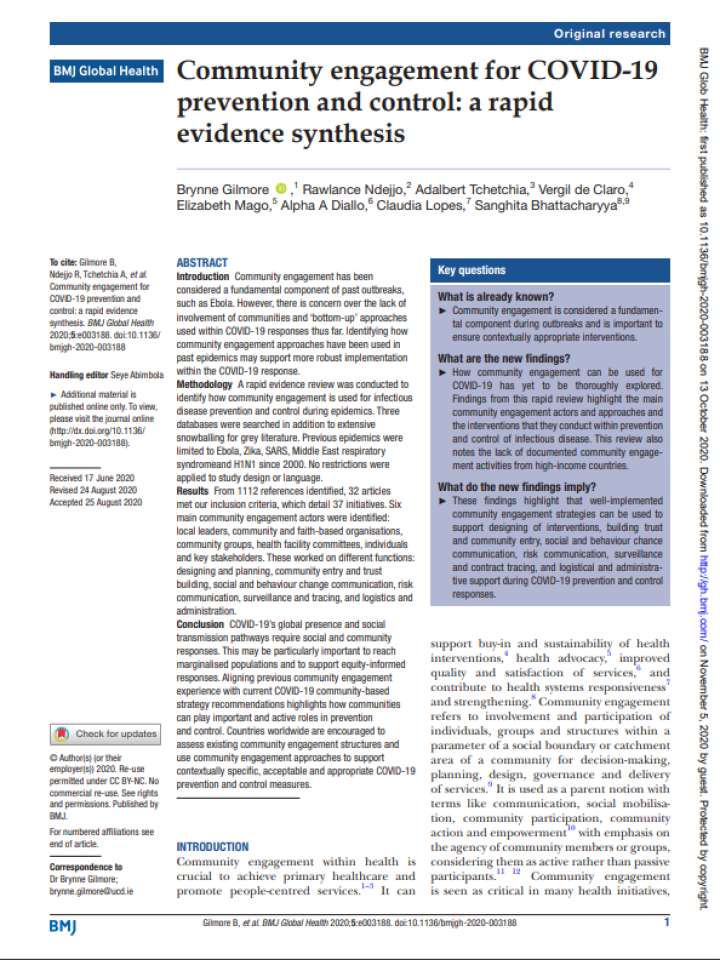Community engagement for COVID-19 prevention and control: A rapid evidence synthesis
This paper wants to understand ‘how community engagement is used for infectious disease prevention and control during epidemics’. In doing so, it reviews evidence from previous epidemics by drawing on findings from five previous epidemics - Ebola, SARS, Middle East respiratory syndrome (MERS), Zika and H1N1 - and identifying what approaches and community actors are involved, what interventions are conducted, who the target groups of community engagement arwe, etc.
To do so, three databases were searched in addition to extensive snowballing for grey literature. Previous epidemics were limited to Ebola, Zika, SARS, Middle East respiratory syndromeand H1N1 since 2000. No restrictions were applied to study design or language.
This review finds and identifies six main actors that often contribute to community engagement during epidemics by having different functions such as: designing and planning, community entry and trust building, social and behaviour change communication, risk communication, surveillance and tracing, and logistics and administration
- local leaders
- community and faith-based organisations
- community groups
- health facility committees
- individuals
- and key stakeholders
Explore further
